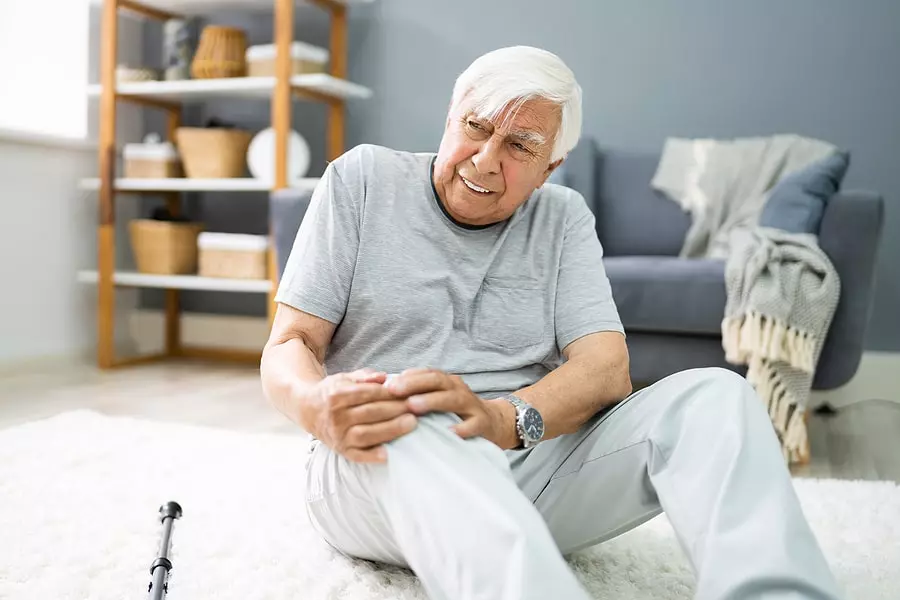How to Sue a Nursing Home for a Slip and Fall Injury
Nursing Home AbuseSlip and fall accidents are among the most common causes of severe injuries among vulnerable persons and senior citizens. A Centers for Disease Control and Prevention (CDC) report reveals that as many as 36 million Americans aged 65 and older suffer injuries in slip and fall accidents every year. According to the report, about 32,000 of these accidents end in fatalities.
A significant percentage of slip and fall accidents among senior citizens occur in nursing homes. Some of these accidents are minor and may not warrant legal action. However, when you entrust an institution with caring for your loved one, and they suffer severe injuries or even fatality due to a slip and fall, you can sue the nursing home for damages.
Can I Sue a Nursing Home for a Fall?

Yes, you can sue a nursing home for a slip and fall. While you can sue the property owner for damages resulting from the accident, you will need to provide proof of negligence on their part. For example, to successfully sue a nursing home for a slip and fall accident, you must prove that hazardous conditions or neglect at the institution caused the damages.
or, give us a ring at (843) 881-8644.
Overview of the 7 Legal Steps Involved
If you or your loved one (in this case, the plaintiff) slipped and fell, the general process of suing the nursing home follows these seven steps:
- Establishing the facts of the accident
- Making a demand to the nursing home
- Filing a legal complaint
- Serving the defendant
- Exchanging discovery
- Negotiating a settlement
- Settling or going to trial
Establish the Facts of the Accident
Before you sue a nursing home for premises liability, you must first establish whether hazardous conditions caused the slip and fall. There are a few conditions you or your lawyer will need to establish to make a case. These include:
Unsafe Conditions at the Nursing Home
Most slip and fall cases revolve around hazardous conditions that caused the slip and resulted in a fall. The central theme of the case will be the suffering the victim sustained and the costs of medical expenses to treat the injuries.
The law requires that nursing home management ensure that the premises are reasonably safe to prevent such eventualities. Therefore, while establishing the facts of the case, you will need to prove hazardous conditions such as wet floors, unmaintained stairs, improperly lit hallways, or debris on the living area.
The Management Was Aware of the Hazard that Caused the Accident
It would not be fair to blame the nursing home management for a hazard of which they were not aware. However, you have a strong case if you can prove that the management of the property was aware of the hazardous conditions before the accident.
It can be tricky to prove that management was aware of various forms of hazards. However, in dire cases, your lawyer may argue that the management should have known about or anticipated the hazard that caused the accident.
The Nursing Home Did Not Warn Residents About the Hazard
It is the responsibility of the nursing home management to warn residents, guests, and visitors of any hazards within the premises. For instance, a wet floor sign can prevent a slip and fall during cleaning. Poorly placed signs or illegible signs are also strong reasons to sue a nursing home if the warnings failed to prevent a slip and fall.
Negligence
Most cases of slip and fall in a nursing home occur due to the negligence of the management. Your case must meet the several elements defined by law to argue negligence. These may include a breach in duty of care, cause of accident injuries, and the management’s knowledge of the hazard, among others.
Who Should Sue and Whom Should You Sue?
When you suffer injury, you can sue an individual or an institution in a civil case. In most cases, it is the victim of the accident who sues the nursing home. However, when the victim cannot sue due to diminished mental capacity or suffers fatal injuries, their loved ones who were part of the nursing home contract may sue.
The suit must clearly name the defendants.
The defendants may vary depending on the facts of the case and nature of the accident, but they typically include:
- Supervisors at the institution
- Person or people who caused the injuries. These may include caregivers
- The persons who hired the caregivers responsible for the accident
- The companies that own or operate the nursing home
You must name the right person, people, or institutions in the lawsuit. Misidentifying defendants may complicate the case, add unnecessary costs, and even cause delays. Therefore, you must establish the identities of the defendants early on during the fact-finding stage of the case.
Demanding Compensation in a Slip and Fall Accident Case
The compensation you should demand when suing a nursing home for a slip and fall accident will largely depend on the nature of the accident.
Most victims of nursing home negligence demand compensation for:
- Pain and suffering
- Physical injuries or head trauma
- Economic losses
- Medical care and expenses
- Impairment or permanent disability
- Costs of relocation to a new nursing home
- Wrongful death in fatal cases
You should consult a nursing home abuse lawyer to help you determine the compensation for which you can sue. The facts of the case should include steps taken to notify supervisors of the accident, actions they took, and a complete medical evaluation of the victim.
Conclusion
Of all the steps taken in filing a slip and fall case against a nursing home, establishing the facts of the case is the most important. When you or your loved one suffers due to an avoidable accident in an institution legally responsible for caring for the vulnerable, the law will back you.
To be legally safe, consult an attorney at the earliest opportunity during or after the fact-finding stage to help you review the case and determine what steps to take.
Nathan Hughey, an attorney and fourth-generation South Carolinian, founded Hughey Law Firm in 2007. Before that, he spent five years defending nursing homes and insurance companies. Leveraging his experience, he now advocates for those injured or wronged by such entities, securing over $220 million in verdicts and settlements.
